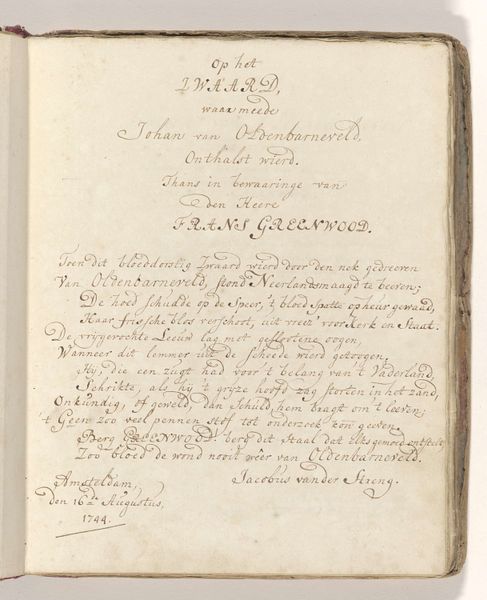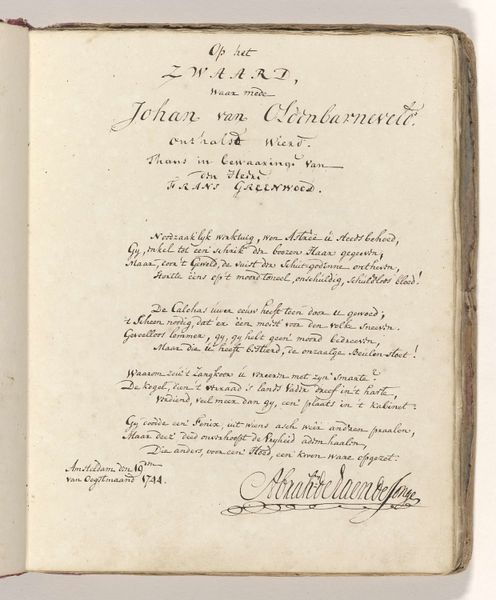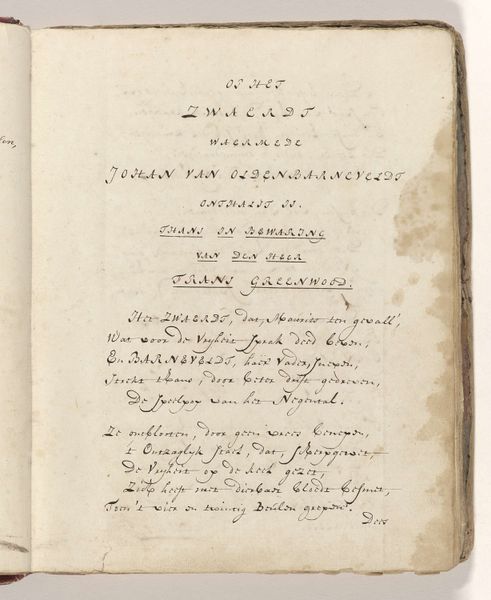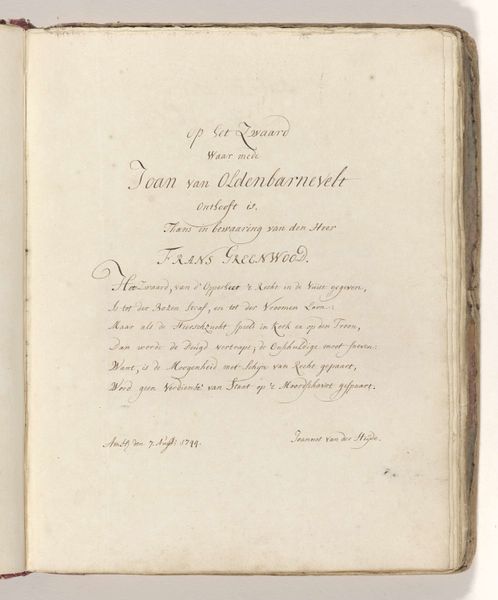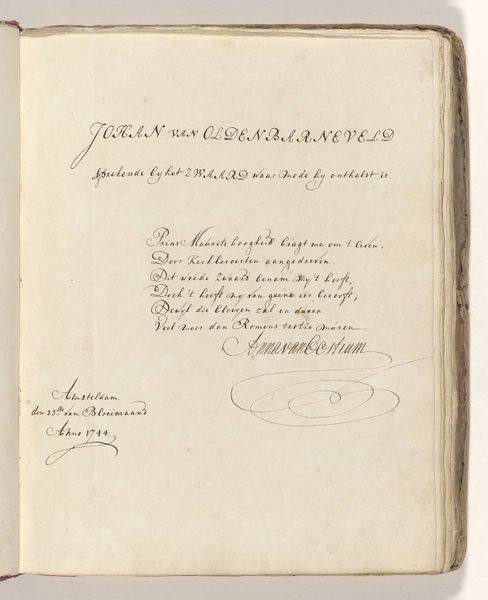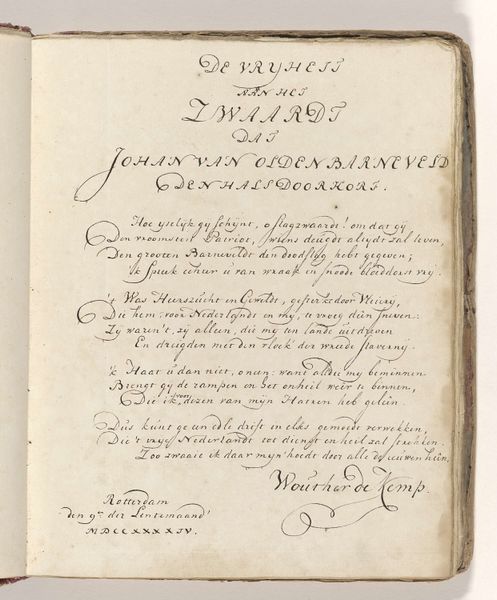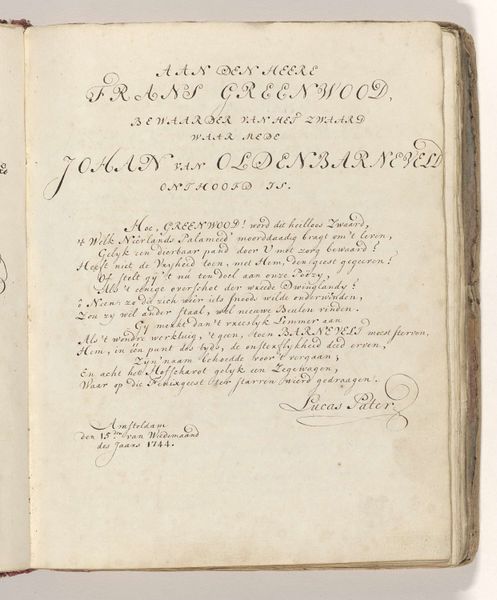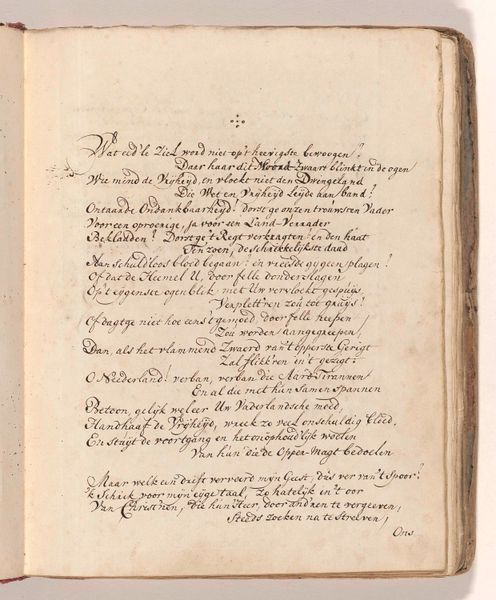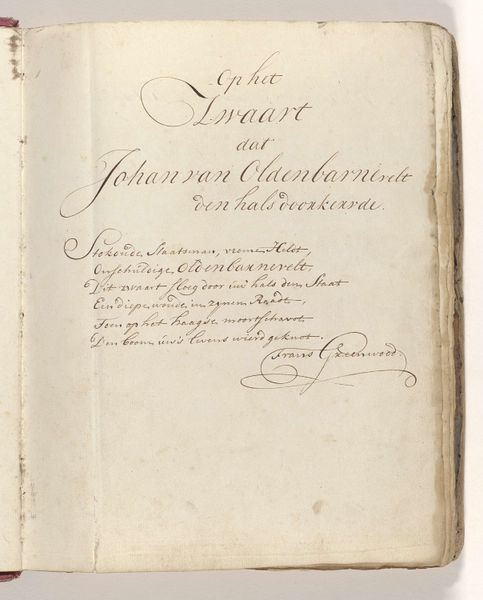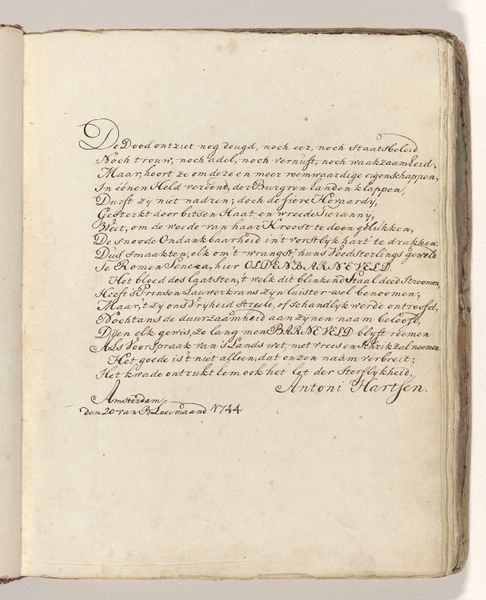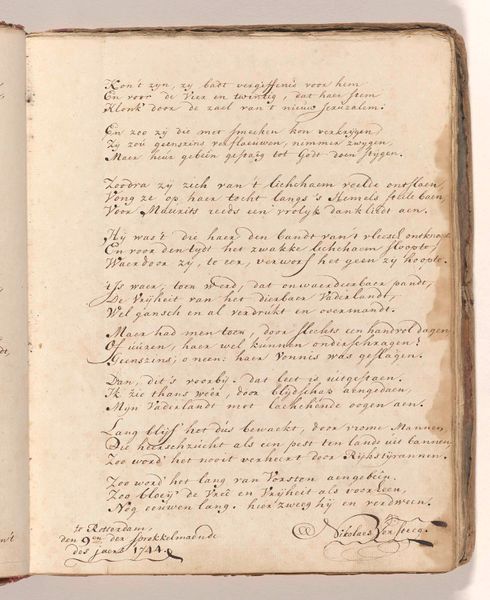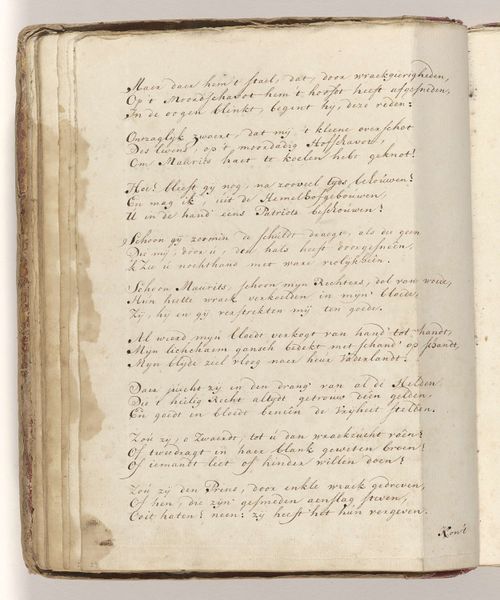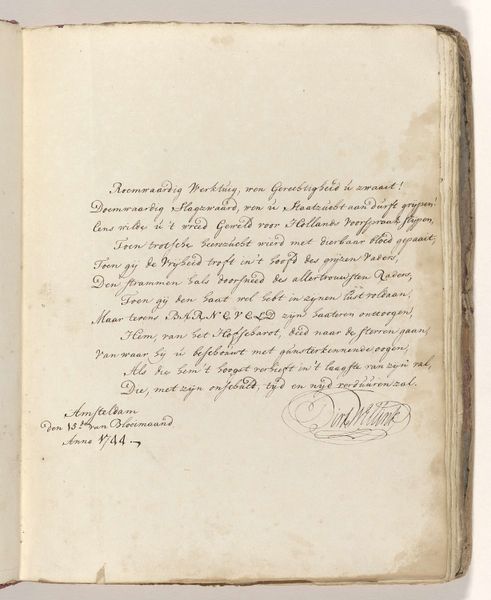
Gedicht op het zwaard waarmee Johan van Oldenbarnevelt in 1619 zou zijn onthoofd Possibly 1744
0:00
0:00
drawing, paper, ink
#
portrait
#
drawing
#
dutch-golden-age
#
paper
#
ink
Dimensions: height 275 mm, width 220 mm
Copyright: Rijks Museum: Open Domain
Curator: Looking at this image, the muted browns of the paper contrast with the elegant strokes of dark ink; what captures your initial attention? Editor: Well, right away, it feels constrained, almost claustrophobic. The density of the text and the tight composition suggest something weighty, burdened with history perhaps. Curator: Indeed. We’re viewing a drawing, attributed to Nikolaes Versteeg and possibly created around 1744. Its title is quite a mouthful: "Poem on the Sword with Which Johan van Oldenbarnevelt was Supposedly Beheaded in 1619.” It's an ink drawing on paper. Editor: So the subject matter then is, in part, a literary critique of material culture and the means of execution… Curator: Precisely. Note the careful calligraphy; how each letter is formed and placed in relation to the next. It reflects the painstaking process of inscription. Someone devoted considerable labor to crafting this visual poem. The material conditions—the type of ink available, the quality of the paper—influenced the final piece. And let's not forget, the history: this object is made in reference to an actual instrument of death wielded due to political circumstances. Editor: And yet the visual execution is, shall we say, less than inspired? The composition is fairly pedestrian and, I must say, lacks dynamism. The letters, while technically proficient, don’t really sing, do they? We seem trapped between a desire for historical documentation and an artistic impulse that is not fully realized, even in script. The work rests heavily on the story it aims to relay. It becomes a visual signpost indicating death. Curator: Perhaps its effectiveness lies not in groundbreaking innovation but in serving as a poignant memorial, transforming political violence through artistic interpretation to invite reflection on justice. Editor: A fair point. Even a subdued visual statement can carry profound resonance, if viewed with consideration of its context, impact, and execution.
Comments
No comments
Be the first to comment and join the conversation on the ultimate creative platform.
